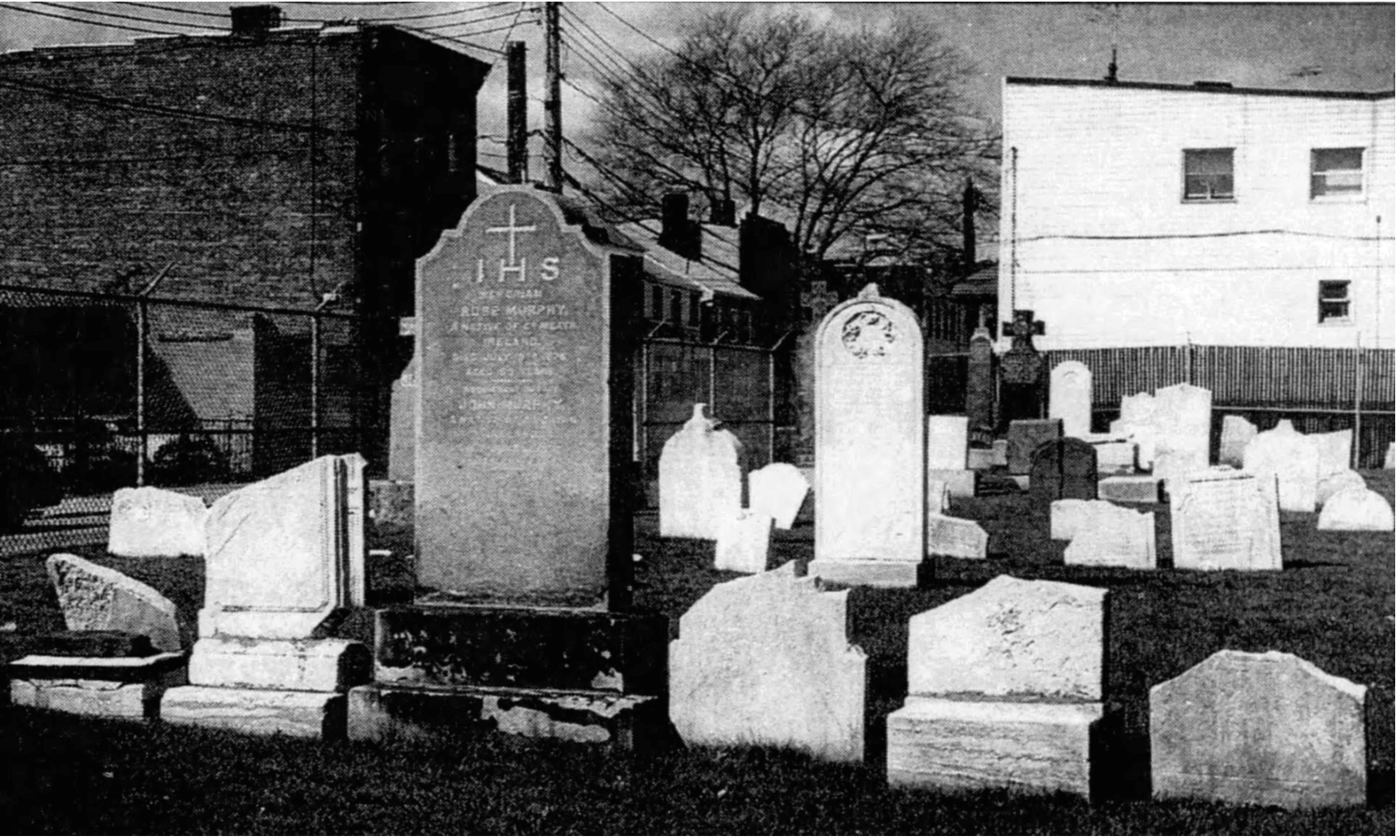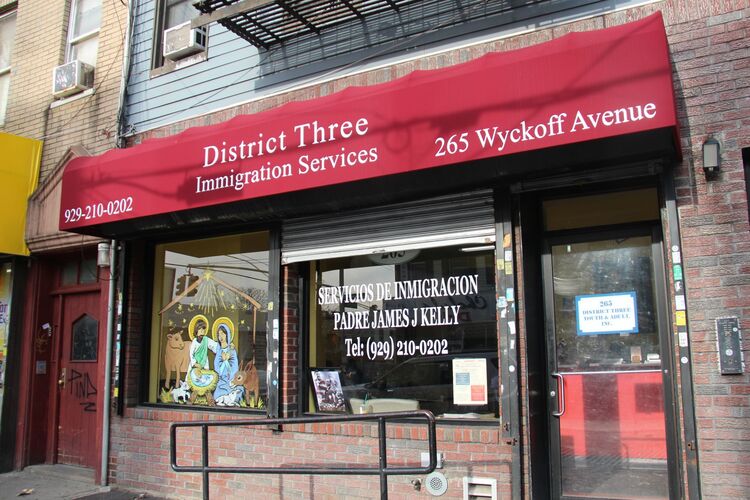Our New York Irish history can often lie hiding in plain sight, especially in Astoria, Queens. If you peer between the cracks of a chain link fence on 21st Street and 26th Avenue, there, you might notice a small, forlorn graveyard with a few ancient, weathered gravestones, many of which have sunk partially back into the ground while a few others have toppled over. Peering through the fence, you can make out Irish names on the stones: Donnelly, Kelly, Muldarry and Joyce, amongst others, as well as their counties of birth. You can also read, “In memory of Patrick Crawley, who departed this life Nov. 5, 1855, a native of County Louth,” or “In memory of John O’Rork, native of the parish of Culmullin, Co. Meath, Ireland.” You might notice the sad fact that all the gravestones face East towards Ireland, whose famines in the 1840s drove the people here to their forgotten final resting place.
Nestled in between two buildings, the graveyard is a curious site because there is no church nearby, but this tiny cemetery has a sad, intriguing story. It is the only graveyard in Queens where most of the interred were Famine refugees. In the 1840s, New York City was flooded with Famine refugees, but few of them made it out to Queens where conditions were far better than in the crowded, disease-ridden tenements of the Lower East Side. Those Irish enough lucky to get to Astoria found work laboring as servants in the homes of Astoria’s wealthy, as well as in its silk factories and greenhouses. Eventually some of them died and were interred here, but no one know how many since many graves here are unmarked, and the actual number of interments is unknown since the early burial registers burned in a fire. Inside the 82 x 188-foot site some 80 tombstones lie dating from 1844 to 1926.
The ground still belongs to Our Lady of Mt. Carmel Church, which in the 19th century occupied an adjacent lot on what was once known as “Emerald Avenue” in Astoria’s one-time large Irish émigré community. The parish, Queens’ second oldest Catholic church, was founded in 1841 as Saint John’s, and the original building was a tiny, humble wooden frame building next to the graveyard. Some time between 1841 and 1844, Henry L. Riker, whose family once owned nearby Rikers Island, donated the plot just south of the church for use as a burial ground. Soon, the Irish community outgrew its small church and built a new building twice as large as the first church. The parish continued to grow and in 1871 it built a new more elegant home up the block.
You may wonder why if the Astoria Irish community grew too big for its church, how come this graveyard is so small? The first graves in the cemetery date from around 1840, but in 1848 Catholic burials in churchyards largely ended when nearby Calvary cemetery, which occupied a massive piece of land, opened, making the Astoria cemetery redundant. By 1871, the parish had outgrown their original building and laid the cornerstone for a new church edifice nearby at Newtown Avenue and Crescent Street, where Our Lady of Mt. Carmel is today. The old church building lived on as a Sunday school and home for the Redemptorist Mission congregation before it was demolished around the turn of the century.
A few Famine-era families had lots in the graveyard, but the last interment was almost a century ago in 1926. One of the families with a supposed connection to the graveyard was that of Elmhurst, Queens, native William Casey, the CIA director under Ronald Reagan.
For unknown reasons, the title to the cemetery was not transferred to the new church and by the second half of the 20th century the graveyard had been forgotten, and the cemetery was left unattended. Soon the tombstones became overgrown with vegetation and the graves disappeared from site. Lacking a proper name, old records refer to the site by various names, including St. John’s Cemetery, St. Mary’s Cemetery, and Mount Carmel Cemetery. Locals often call it the “Famine Cemetery.” On Dec. 6, 1975, the Irish Echo featured a story on the overgrown graveyard that read, “Old Cemetery in Deplorable State.”
The Diocese of Brooklyn took over maintenance of the site in 1983 and removed the overgrowth, making the graces visible again for the first time in many years. In 2014, the Ancient Order of Hibernians laid a wreath at a ceremony honoring the victims of the Famine. In 2016 as part of the parish’s 175th anniversary, a Mass to honor those interred in the graveyard was said.
Sadly, I never knew of the existence of the graveyard, or the parish’s long Irish history, when a parishioner of Our Lady of Mt. Carmel in the early 1990s. The graveyard is just another poignant reminder of how deep the Irish roots of New York City lie and how many anonymous Irish lived and died building this city.







